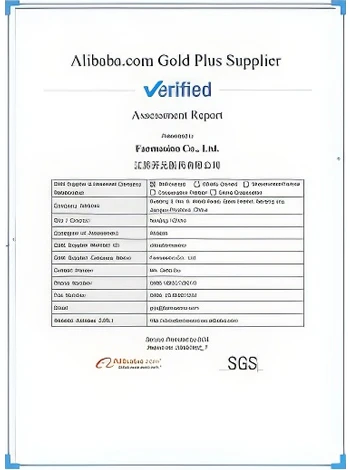



Safety Data Sheet for Chlorine Dioxide Liquid Handling and Storage Guidelines
Safety Data Sheet (SDS) for Chlorine Dioxide Liquid
Chlorine dioxide (ClO2) is a yellowish-green gas that can also be stored and transported in liquid form. It is widely used as a disinfectant, bleaching agent, and oxidizing agent across various industries including water treatment, pharmaceuticals, and food processing. Understanding the properties, handling, and safety measures related to chlorine dioxide liquid is crucial for ensuring safety in its application. This article outlines significant information typically found in a Safety Data Sheet (SDS) for chlorine dioxide liquid.
1. Identification
The first section of an SDS provides essential product identification details. Chlorine dioxide liquid should be labeled clearly as hazardous. The relevant contact information for the manufacturer or supplier is also included, which is vital for reporting any emergencies or acquiring further information. The primary uses of chlorine dioxide include its role in water disinfection and its application in bleaching processes.
2. Hazard Identification
Chlorine dioxide poses several hazards. Inhalation of the gas can irritate the respiratory tract, and in larger concentrations, it may lead to severe health problems. Skin and eye contact can cause burns or severe irritation. The liquid form is corrosive, and exposure can result not only in chemical burns but also in significant environmental impacts if not handled properly. The SDS will specify each hazard, using standard hazard symbols and classifications aligned with occupational safety guidelines.
3. Composition/Information on Ingredients
This section outlines the chemical composition of the product, specifying the concentration of chlorine dioxide in the liquid. Understanding the concentration is key for assessing risks, as higher concentrations may increase hazards associated with handling and exposure.
In case of exposure, the SDS provides detailed first-aid measures to take. For skin and eye contact, the affected area must be flushed with plenty of water for at least 15 minutes. If chlorine dioxide is inhaled, moving the person to fresh air and seeking medical attention is crucial. Additionally, if there is any ingestion, do not induce vomiting but seek medical help immediately.
chlorine dioxide liquid sds

5. Firefighting Measures
Chlorine dioxide is not highly flammable; however, it can support combustion of other materials. The SDS provides guidance on appropriate firefighting techniques and materials, recommending dry chemical extinguishers for nearby flammable materials. Firefighters should wear self-contained breathing apparatus due to the potential release of toxic gases when chlorine dioxide decomposes.
6. Accidental Release Measures
In the event of a spill or leak, immediate action is essential. The SDS will specify containment measures, such as using neutralizing agents or absorbents suitable for chlorine dioxide. The area should be evacuated to minimize exposure, and proper personal protective equipment (PPE) should be utilized.
7. Handling and Storage
Chlorine dioxide must be handled with extreme caution. The SDS typically includes guidelines on safe handling practices which require maintaining the product in a cool, well-ventilated area away from incompatible materials. Storage containers should be suitable for corrosive materials, and opening containers should be done only in designated areas to avoid exposure.
8. Personal Protective Equipment (PPE)
The SDS emphasizes the importance of PPE when handling chlorine dioxide. This includes gloves made from materials resistant to corrosive substances, goggles or face shields to protect the eyes, and suitable personal protective clothing. Respiratory protection may also be required depending on the concentration of the chlorine dioxide in the air.
Conclusion
Chlorine dioxide liquid is a powerful agent used across various applications, but it comes with inherent risks that necessitate careful handling. Utilizing the information contained in a Safety Data Sheet (SDS) allows professionals to implement safety protocols effectively, reducing the likelihood of accidents or health problems associated with its use. By understanding and respecting the properties and hazards of chlorine dioxide, workers can safeguard not only their health but also that of their co-workers and the environment.
-
Why Sodium Persulfate Is Everywhere NowNewsJul.07,2025
-
Why Polyacrylamide Is in High DemandNewsJul.07,2025
-
Understanding Paint Chemicals and Their ApplicationsNewsJul.07,2025
-
Smart Use Of Mining ChemicalsNewsJul.07,2025
-
Practical Uses of Potassium MonopersulfateNewsJul.07,2025
-
Agrochemicals In Real FarmingNewsJul.07,2025
-
Sodium Chlorite Hot UsesNewsJul.01,2025










